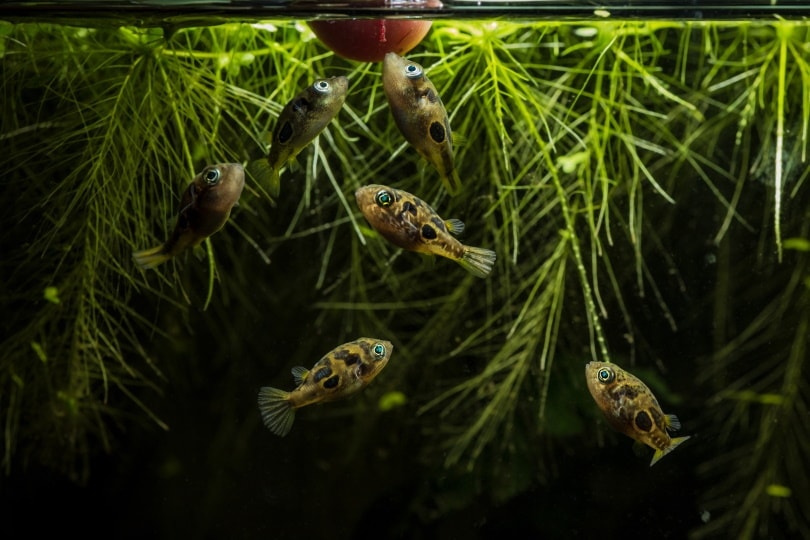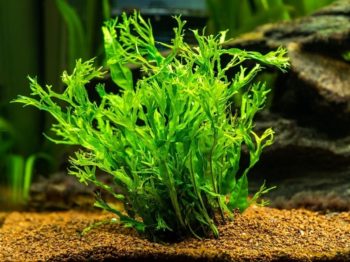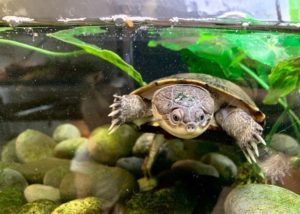10 Reasons Why Your Rasboras Are Dying & What To Do

Updated on
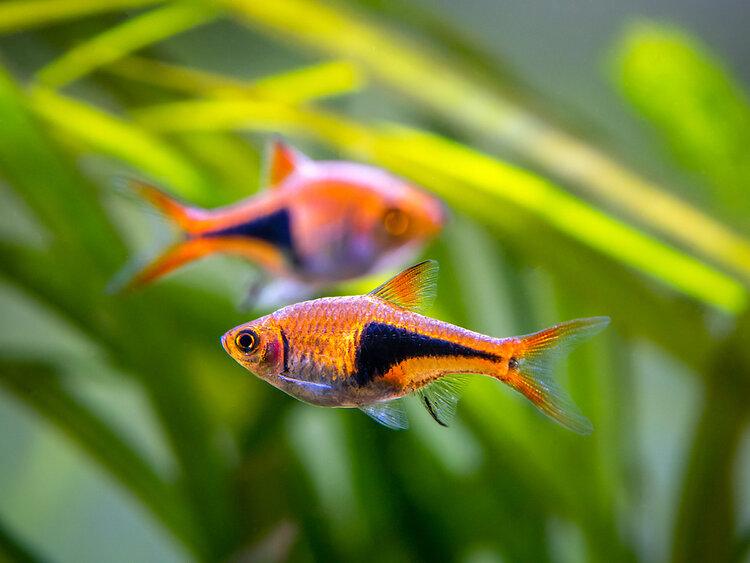
Rasboras are some really bright and colorful fish to have in a home aquarium. Their colors and their boisterous personalities can really liven things up. Speaking of being alive, fish need to be cared for properly, or they will die. So, why do my rasboras keep dying?
Well, there are several reasons why your rasboras may be dying. Some common causes of rasbora death are included below.
The 10 Reasons Why Your Rasboras Keep Dying
There are 10 reasons why your rasboras keep dying. Let’s take a look at each one and what you can do to avoid rasbora death.
1. Dirty Water & Dirty Tank
One of the most common causes of rasboras death is dirty water and a dirty tank. First off, you need to have a good aquarium filter. First off, this means that your aquarium filter should be able to process at least three times the total amount of water in the tank per hour. This will help keep the tank as clean as can be.
Moreover, this also means having a filter that engages in all three major forms of aquarium filtration: mechanical, biological, and chemical filtration.
High Ammonia Levels
One of the most common causes of death in all aquarium fish is high ammonia levels and high nitrate levels. Ammonia is released by rotting food and fish waste. When there is too much fish waste in the tank, as well as uneaten food, it will break down and release ammonia. Even a little bit of ammonia is enough to kill rasboras.
Therefore, one of the most crucial things here is to have a filter that engages in top-notch biological filtration. To avoid food and waste building up in the water, a good mechanical filtration system is needed, but you should also be changing about 30% of the water in the tank per week.
You also want to engage in the weekly cleaning of your aquarium, and this includes the plants, the substrate, and everything else. A dirty and unkempt aquarium is one of the leading causes of death in all aquarium fish.
2. Improper Water Parameters
Another leading cause of death in rasboras is if the tank conditions or water parameters are not ideal. This can be due to the water temperature, pH level, and water hardness level. So, first off, in terms of tank temperature for rasboras, this should be between 72–81°F. Therefore, this means that you will probably need an aquarium heater and a thermometer, especially if you live in a cooler climate.
Water that is too cold will cause a decrease in metabolic rate and the shut down of internal organs, and water that is too cold will more or less cook a fish over a long period. When it comes to the pH level of the water should be between 6.0–7.8. Water that is either too basic or too acidic will end up destroying the internal organs of fish.
This means that you may need to use special pH-altering chemicals to adjust the pH level of the water. In terms of water hardness, this should be between 2 and 15 dGH. You may need to use special water conditioners to maintain an ideal level.
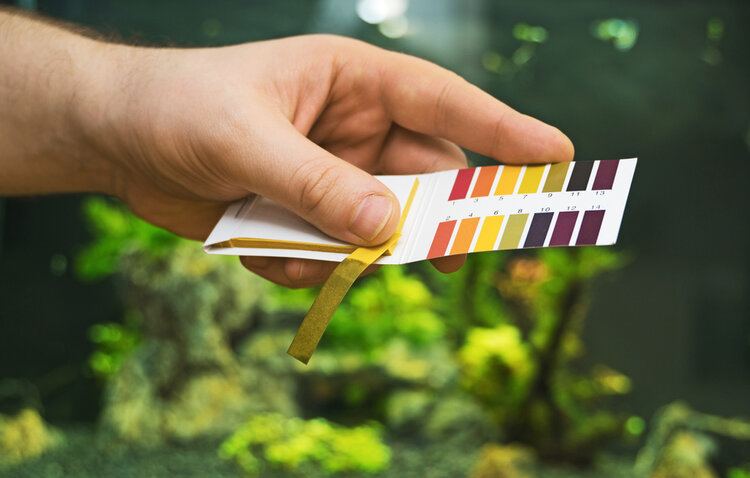
3. Improper Feeding & Bad Food
Yet another leading cause of death in rasboras is improper feeding. First off, this means feeding them high-quality tropical fish food that provides them with a nutritionally balanced diet. Do keep in mind that rasboras require a high-protein diet. If you do not feed your rasboras high-quality food, especially not enough protein, this can eventually kill them.
It is essential to provide high-quality food to prevent death. Moreover, the ash content in the food should be quite low, and if possible, find food that is advertised as being easy to digest. Low-quality fish food can lead to constipation and death. Moreover, in terms of the amount, feed rasboras no more than they can eat in 2 minutes twice per day. Overfeeding can also lead to illness, constipation, and death.
Finally, the other thing to keep in mind here is that live foods may contain harmful bacteria and parasites that can kill fish. Therefore, to help you avoid your rasboras dying due to food-related parasites, freeze-dried fish food is usually the best way to go. The freeze-drying process will kill parasites.
4. Disease
This is something that we are going to touch on further below in the section about common diseases that affect rasboras. Keep in mind that because these fish live in schools or should be kept in schools when one fish has a communicable disease, chances are that the whole school also has it. We will talk about common rasboras diseases in more detail in the following section of this post.
5. Wrong Tank Mates
Another thing that can and sometimes does lead to rasboras dying is if you keep them with the wrong tank mates. Rasboras, although they are quite feisty, are for the most part quite gentle, and yes, they are quite small too. Therefore, if you keep them with much larger or very aggressive fish or both, those fish may bully and injure your rasboras, they may kill them, or they may eat them outright.
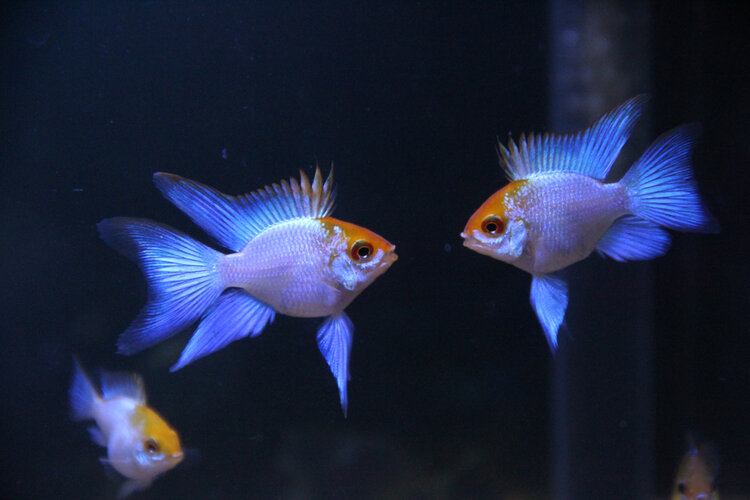
6. Stress
Stress can come in many forms, and it is a leading killer of all aquarium fish. Stress can be caused by dirty water, improper feeding, bad tank conditions, being introduced to a new tank too quickly, being cramped in a small environment, and being with the wrong tank mates.
To avoid stressing your rasboras out to the point of death, make sure to feed them right, keep them in a tank that is large enough for them, house them with plenty of other rasboras, avoid aggressive fish, and do everything in your power to mimic the natural environment of rasboras.
7. Jumping Out
Rasboras can be very lively fish, and they have been known to jump out of tanks. Well, if your rasbora manages to jump out of the aquarium, it’s only going to live for a couple of minutes on dry land. It is very strongly recommended to invest in a good hood, lid, or grate to keep the rasboras contained to prevent them from jumping out of the tank.
8. Living Solo
Rasboras are schooling fish, and they are happiest when kept in groups of at least 5 to 7 fish, but the more the merrier, and some people have up to 25 or 30 rasboras in the same large tank. One thing you should never do is to keep a single rasbora on its own. Although it is rare, rasboras that live on their own may become so depressed and stressed out that they stop eating and more or less just lose the will to live.
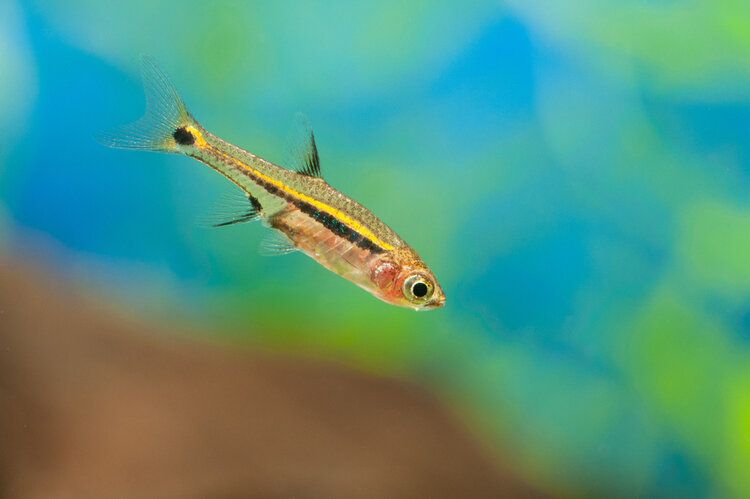
9. New Plants, Substrate, & Decorations
Another thing that may cause your rasboras to die is if you add new plants, substrate, or decorations to the tank without cleaning them first. Aquarium plants, rocks, and everything in between should be washed down with a combination of bleach and water to ensure that they do not contain any parasites or diseases which can then be transferred to your fish.
Although it does not happen that often, it wouldn’t be the first time that a rasbora dies due to this kind of situation.
10. Chlorinated Water
If you are using tap water to fill the aquarium, one thing you absolutely need to do is to make sure that the water is not chlorinated. Pretty much any amount of chlorine in the water will kill fish and plants alike, and yes, all tap water has chlorine.
Here, you can use a special dechlorinating chemical to get rid of chlorine or just allow the tap water to sit in the open for 24 hours. This will allow the chlorine to dissipate. However, there is a harsher form of chlorine used in some tap water which can only be removed by using dechlorinating agents.
The 3 Most Common Harlequin Rasbora Diseases
There are a number of common diseases that may affect your rasboras, many or even most of which will kill them outright. Let’s talk about how to prevent, identify, and treat the three most common rasbora diseases.
1. Dropsy
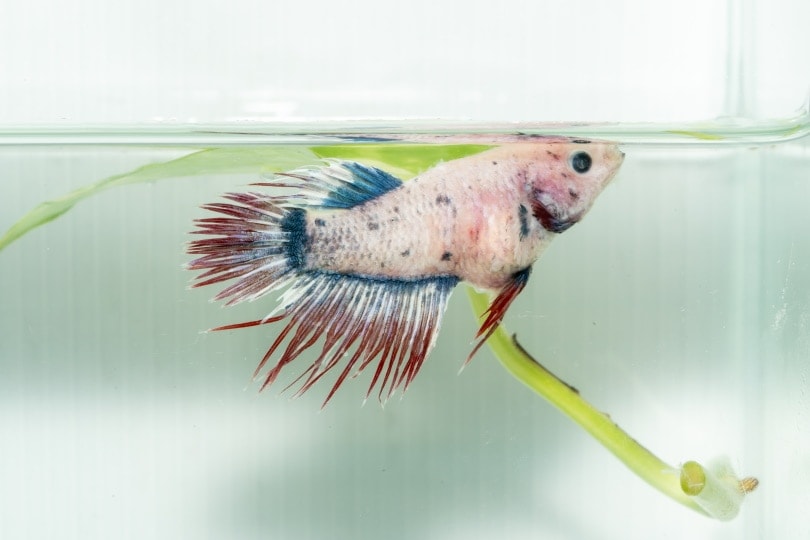
Dropsy is a common condition that affects rasboras and many other aquarium fish alike. The name dropsy is used because the bellies of fish drop-down and become very swollen. If left untreated, dropsy can and will kill your rasboras.
Cause
The cause of dropsy can actually be a myriad of things. Dropsy is technically caused by bacteria which can be found in all aquariums. That said, most healthy fish are not susceptible to dropsy-causing bacteria unless they are unhealthy, stressed, or have a compromised immune system.
There are a number of things that can cause your fish to be stressed and unhealthy, such as poor water quality, aggressive tank mates, poor feeding, ammonia and nitrate spikes, drastic drops or increases in water temperature, and other diseases. If your rasboras are already stressed and unhealthy, then the dropsy bacteria may infect them and lead to severe illness.
Symptoms
If you think that your rasboras may be suffering from dropsy, there are a few telltale signs or symptoms to look out for. The following are symptoms commonly associated with dropsy;
- Extremely swollen belly
- Scales that stand out and look like pinecones
- Bulging eyes
- Pale gills
- Red and swollen anus
- Pale and stringy feces
- Body ulcers
- A curved spine
- Clamped fins
- Red fins and skin
- Lethargy
- Lack of appetite
- Swimming near the surface
Treatment
If you have five fish and two have dropsy, the recommendation is to euthanize them to stop the disease from spreading to the other fish. Fish suffering from dropsy have a very high mortality rate. The first thing you need to do is to ensure that the tank water is as clean as possible.
Here, it’s all about treating the causes of dropsy. As mentioned before, the dropsy bacteria take hold due to underlying stress and poor conditions, so treating those first is essential. Other than that, there are a few things you can try.
- Move the infected fish to a hospital tank immediately before it can infect tank mates.
- Add 1 teaspoon of salt for each gallon of water in the tank. Adding salt to the water can help rid the body of the fish of bacteria.
- In some cases, providing your fish with very high-quality food that helps boost the immune system may be enough to solve the issue.
- One of the most effective ways to treat dropsy is by using specialized antibiotics. Be sure to follow all directions on medicines to the tee, as too much can kill fish, and too little will not cure the illness. This should be used as a last resort or if you are seeing a community-wide infection.
Avoidance
Due to the variety of factors that can allow the dropsy bacteria to infect your fish and cause illness, it is one of the more difficult diseases to prevent in rasboras. Seeing as it is mostly caused by stress and bad water conditions, the best thing you can do to avoid a bout of dropsy is to maintain a clean tank, change the water frequently, make sure the filter is working, keep the rasboras with ideal tank mates, feed them the right food, and just make sure that they are not stressed out in general.
2. Ich
Ich is another disease that commonly affects rasboras as well as many other aquarium fish alike. This is a protozoan disease which is often called “white spot disease.” Ichthyophthiriasis is the full name for this illness, but we will stick with ich to make it easier. This is something that can affect all freshwater fish, both in the wild and in captivity, although it does seem to be more prevalent with aquarium fish.
Cause
Just like with dropsy, the ich bacteria, these protozoans, are actually present in almost all aquariums. However, fish should have a strong enough immune system to prevent them from getting ich. Yes, the protozoans are technically always in the water, but just like with dropsy, it’s stress and a weakened immune system that causes the ich disease to take hold in fish.
Once again, many things can cause stress in fish, as well as a weakened immune system. Some causes include the following.
- Poor diet
- Dirty water
- Poor water conditions
- The wrong water parameters
- Being kept with aggressive tankmates
- Being moved too much
- Being transported too often
- Bad lighting
Symptoms
Ich has some easy-to-distinguish symptoms. The first thing you should look out for on your fish is white spots. White spots on their body and gills are a clear indication that ich is afoot. Fish with ich will become irritated and restless, often trying to rub or scratch their bodies on various items within the tank.
Once the disease progresses, it may then cause respiratory distress, a loss of appetite, agitation, and eventually death.
Treatment
Something that is important to know here is that ich has a lifecycle. First, trophozoites mature on the skin of the fish, then the Trophonts (mature trophozoites) leave the fish, at which point they produce tomites, which are then released and go back to the fish, thus starting the cycle over again. Now, ich is temperature dependent and can only be killed in the tomite stage. Therefore, what you need to do here is to raise the tank temperature to 80 degrees for 48 hours, as this will speed up the life cycle of the ich protozoans.
The faster the cycle, the faster the ich protozoans have to leave the fish to produce tomites, and this is when it can be killed. You need to therefore ensure that your tank is clean, that the fish are properly fed, and that the water parameters are ideal. Strengthening the immune system of your fish is critical here. During the tomite stage, when the protozoans fall off your fish, is when they can be killed. Therefore, you will want to use a tank-wide medicinal treatment.
Remember, the mature ich protozoans on the fish cannot be killed and can only be killed once they fall off the fish. Therefore you need to treat the whole tank or the water in the tank. Attempting to treat a single fish is futile. Adding either Formalin or Malachite green to the water (according to package directions) should kill all ich in the water.
Avoidance
Just like with dropsy, seeing as the main cause of ich is a generally stressed out and unhealthy fish with a weak immune system, doing everything you can to ensure that your rasboras are happy and healthy in the first place is the best way to avoid ich.
- Make sure to feed rasboras a proper diet.
- Make sure to not overfeed or underfeed the fish.
- Make sure the pH, hardness, and water temperature are ideal.
- Ensure you have a working filter.
- Change the water often—30% per week.
- Ensure that water is dechlorinated.
- Keep rasboras with non-aggressive fish.
- Keep rasboras in schools of at least five.
3. Fin Rot
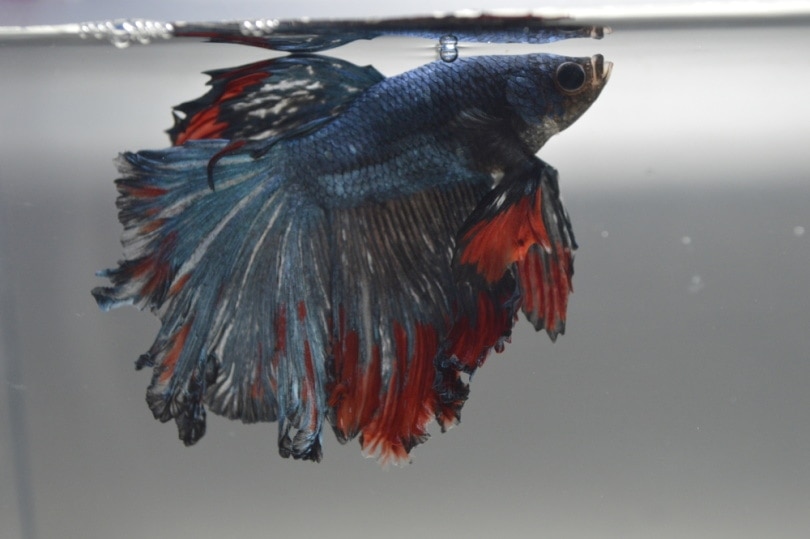
Fin rot is a very easy-to-prevent disease, but when it takes hold, it can be very difficult to treat. As you can probably guess by the name of it, this disease causes the fins on your fish to rot. This will infect other fish and kill all fish present in the tank if not dealt with immediately.
Cause
Yes, just like with ich and dropsy, the bacteria that cause fin rot are usually always present in all aquariums. These bacteria can include Aeromonas, Pseudomonas, or Vibrio bacteria. They’re all different bacteria, but they will all cause fin rot. Once again, fish should have strong enough immune systems to prevent the bacteria from invading their bodies and causing the disease.
However, stressed-out and generally unhealthy fish with poor immune systems are susceptible to it. Just in case you forgot, below are the most common causes of stress and weakened immune systems in fish.
- Poor diet
- Dirty water
- Poor water conditions
- The wrong water parameters
- Being kept with aggressive tankmates
- Being moved too much
- Being transported too often
- Bad lighting
Symptoms
Symptoms of fin rot will start with the edges of the fins becoming discolored. This is followed by the fraying of the fins. Small pieces of the fins will start to die and fall off, which causes the fins to become shorter and more tattered over time. Secondary infections may also develop, and at the end of it all, the fish will die.
Treatment
The best way to treat fin rot is by treating the underlying factors causing stress and bad health. Once again, this includes simple things like regular cleaning and tank maintenance, regular water changes, having a good filter, maintaining the right pH, hardness, and temperature, proper tank mates, and proper feeding.
However, you will also need to use specialized antibiotics to get rid of fin rot. What needs to be said is that once rasboras have fin rot, getting rid of it is very difficult. Some recommend immediately removing the affected fish from the tank to prevent the disease from spreading. In severe cases, euthanizing may also be recommended.
Avoidance
Just like with ich or dropsy, the best way to avoid fin rot from occurring in the first place is to engage in excellent aquarium-keeping practices. If you keep stress at a minimum and ensure the proper living conditions for your fish, fin rot should be avoidable. Avoid having unhealthy fish by doing the following things.
- Make sure to feed rasboras a proper diet.
- Make sure to not overfeed or underfeed the fish.
- Make sure the pH, hardness, and water temperature are ideal.
- Ensure you have a working filter.
- Change the water often—30% per week.
- Ensure that water is dechlorinated.
- Keep rasboras with non-aggressive fish.
- Keep rasboras in schools of at least five.
Conclusion
There you have it, all of the most common reasons why your rasboras are dying, as well as the most common diseases to affect them. Keep in mind that 99% of these issues can all be avoided by simply taking proper care of your rasboras and aquarium.
Related Read:
- Great Plants for Rasboras – Reviews & Buyers Guide
- How Many Rasboras Can You Have In a 5, 10 & 20-Gallon Tank?
Featured Image Credit: Joan Carles Juarez, Shutterstock


